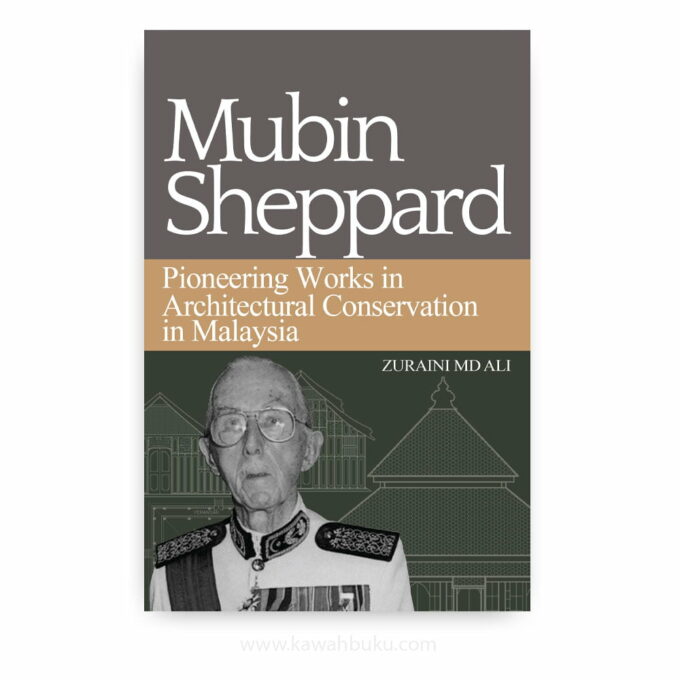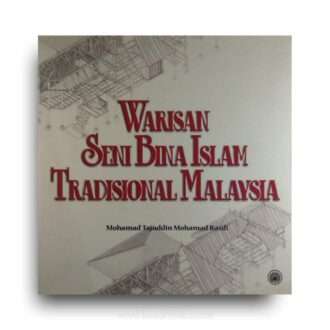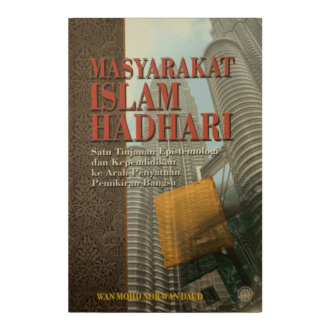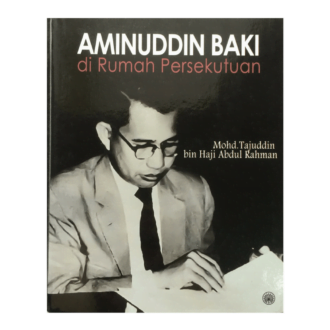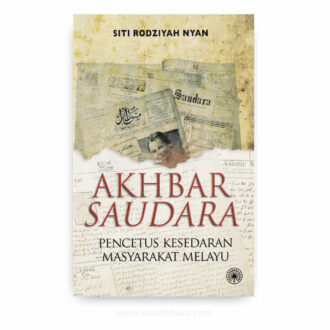Mubin Sheppard: Pioneering Works in Architectural Conservation in Malaysia attempts to give a chronological account of the development and origins of Malaysian architectural conservation efforts, with particular reference to the role of the late Tan Sri Dato’ Mubin Sheppard, catalyst and leading promoter of conservation activities, who became the focus of this book. Thus, Sheppard’s contribution to the fledgling heritage conservation movement is examined against the background of the establishment and involvement of government agencies, primarily the Museums Department under the British Empire from the 1880s till the newly-implemented National Heritage Act 2005.
Malaysia, after more than 58 years as an independent nation, is one of the most progressive countries in architectural development in South East Asia. In the last four decades, a conscious appreciation of architectural conservation has been established in the country. This book provides a framework for the history and development of the architectural conservation movement in Malaysia, since a large vacuum exists in this area. Using the historical interpretive method, a qualitative examination of case studies and leading prominent personnel has provided historical documentation and useful insights.
The chapter of Mubin Sheppard: Pioneering Works in Architectural Conservation in Malaysia starts with a brief review of Sheppard’s life—in particular, his work in Malaya (later Malaysia), followed by a literature review of the historical survey of conservation organisations in the United Kingdom (the British colonial motherland) to see the influence of past events and conservation practices at the time. This chapter then examines Sheppard’s contributions to notable Governmental agencies, i.e. the Department of Museums (DoM), and Non-Governmental Organisations, namely the Malayan (later Malaysian) Historical Society (MHS) and Badan Warisan Malaysia (BWM or The Heritage of Malaysia Trust).
The major sources of information in this work include accessible reports, relevant newspaper articles and journal collections in the archives and libraries in Malaysia and the United Kingdom, and in particular, documents belonging Sheppard in the National Archives of Malaysia the University of Cambridge Library and the National Archives in the UK and collection of individuals. Studies on selected conservation projects that Sheppard participated in (notably Istana Ampang Tinggi, Masjid Kampong Laut and Istana Tengku Nik), interviews and correspondence with individuals from organisations Sheppard was involved with (MHS, DoM and BWM) and visits to the sites were conducted and provide a new perspective and knowledge on architectural conservation in the country and delineate a significant historical path for others to follow in understanding the crucial issues and challenges faced by those who carried out conservation projects in the early years in Malaysia.
Preface
1. Family and Educational Background
Mubin Sheppard: His Life and Times
The Malayan Civil Service: The Early ‘Malay-Mad’ Years
Marriage, World War II and Internment in Changi
War Hero, Return to the MCS and His Family Leaves for England
A Castle Inheritance, An Adopted Son and A New British High Commissioner
A Political Misunderstanding, Conversion to Islam and Deciding to Stay Behind
Heading Food Denial, Malayan Government Service and the Sale of Cabra
The Keeper of Public Records, Muzium Negara, PERKIM and Retirement from Civil Service
Private Citizen Sheppard and His Voluntary Work
Sheppard’s Character as Described by Others
The People Who Influenced Sheppard
Louisa Frances Sheppard
Rudyard Kipling
Sir Hugh Clifford
Rosemary Sheppard nee Oakeley
Sir Gerald Templer
Reflection
2. From United Kingdom to Malaya
Learning from the Motherland: The United Kingdom Scenario
Before the Conservation Movement
Conservation Movement
The Society of the Antiquaries
The Society for the Protection of Ancient Buildings
John Ruskin
William Morris
Scrape and Anti-scrape
The Establishment of the Society for the Protection of Ancient Buildings
The Formation of the National Trust
The Ancient Monuments Society
The Georgian Group
World War II and After
The Ancient Monuments Society in the 1950s
The Civic Trust
The Victorian Society
SAVE Britain’s Heritage
The Thirties Society / The Twentieth Century Society
English Heritage
Reflection
The Start of Architectural Conservation in Malaysia
The Development of Museums in Malaya
The Interruption of World War II
The Bombing of the Selangor Museum
Templer and the Museum Revival
The Setting up of a Temporary National Museum
The Birth of the Malayan Historical Society
Other State Museums and Restoration of Istana Ampang Tinggi, Negeri Sembilan
Early Conservation Efforts
Reflection
3. The Department of Museums and the Malayan Historical Society
The Department of Museums and the Antiquities and Treasure — Trove Ordinance, 1957
The Founding of the National Museum
The Origin of the Building Design of the National Museum
Sheppard’s Rumah Kenangan
Sheppard’s Influence on the Design of the Museum
The Actual Design and Construction of the Museum Building
The Malayan Historical Society: The Early Years
The Establishment of Architectural Education in Malaysia and the Emergence of Heritage Documentation Records
The Early Phase: Pre-Independence
Julius Posener and the Establishment of the Architectural School
The 1950s and the Transitional Years of the Early 1960s
Reflection
4. Sheppard’s Contribution as a Private Citizen
The Rising Awareness of the Need for a Local Identity
The Department of Museums in Transition
Enforcing the Antiquities and Treasure Trove Ordinance, 1957
The Proposals for the Establishment of the National Institute of History and the National Trust
Collaborations
Saving Masjid Kampong Laut
The Origin and Design of Masjid Kampong Laut
The Natural Disaster
The Initial Stage of Restoration
The Unheard Voices of the Locals
The Urgency to Proceed
Restoration of Istana Tengku Nik
Sources of Information Regarding Royal Malay Wooden Palaces
The History of the Old Malay Palace of Terengganu – Istana Ijau
The Public Appeal
Re-erection of Istana Tengku Nik
The Reconstruction of Istana Satu
The Purchase of Rumah Tengah
National Architectural Identity
Reflection
5. The Rise of Heritage Conservation
Building Boom and the Ensuing Threat to Heritage Buildings
The Antiquities Act 1976 (AA 1976) and its Implementation
Department of Museums — Expansion of Duties
The Involvement of Other Professionals
Picking Up Momentum
The Conservation of Buildings at Padang Merdeka, Kuala Lumpur
The Birth of Badan Warisan Malaysia
The Founders and Early Members
The Objectives and Approach of Badan Warisan Malaysia
Sahabat Warisan Malaysia
Reflection
6. A New Direction for Malaysia
Expanding Conservation Activities and Awareness
The Department of Museums and Antiquities in the New Millenium
Revisits to Selected Sheppard-Related Buildings
Istana Ampang Tinggi in Seremban, Negeri Sembilan
Sheppard’s House — Rumah Kenangan, Petaling Jaya, Selangor
Masjid Kampong Laut in Nilam Puri, Kota Bharu, Kelantan
Istana Tengku Nik, Kuala Terengganu, Terengganu
The Choice to Restore Individual Palaces as Opposed to a Palace Complex
Rumah Pasembang Che Teh
Istana Tengku Nik (Tengku Nik’s Palace) or Rumah Tele (Tele House)
Looking Back
Sheppard’s Contribution to Architectural Conservation
Conclusions
Epilogue
Bibliography
Index

